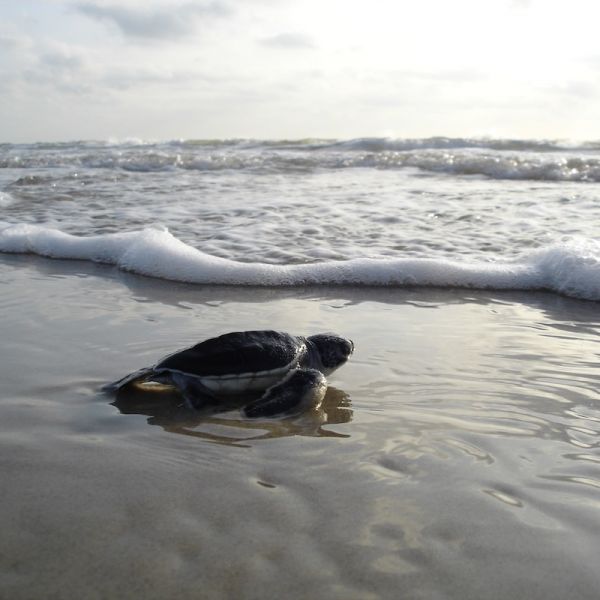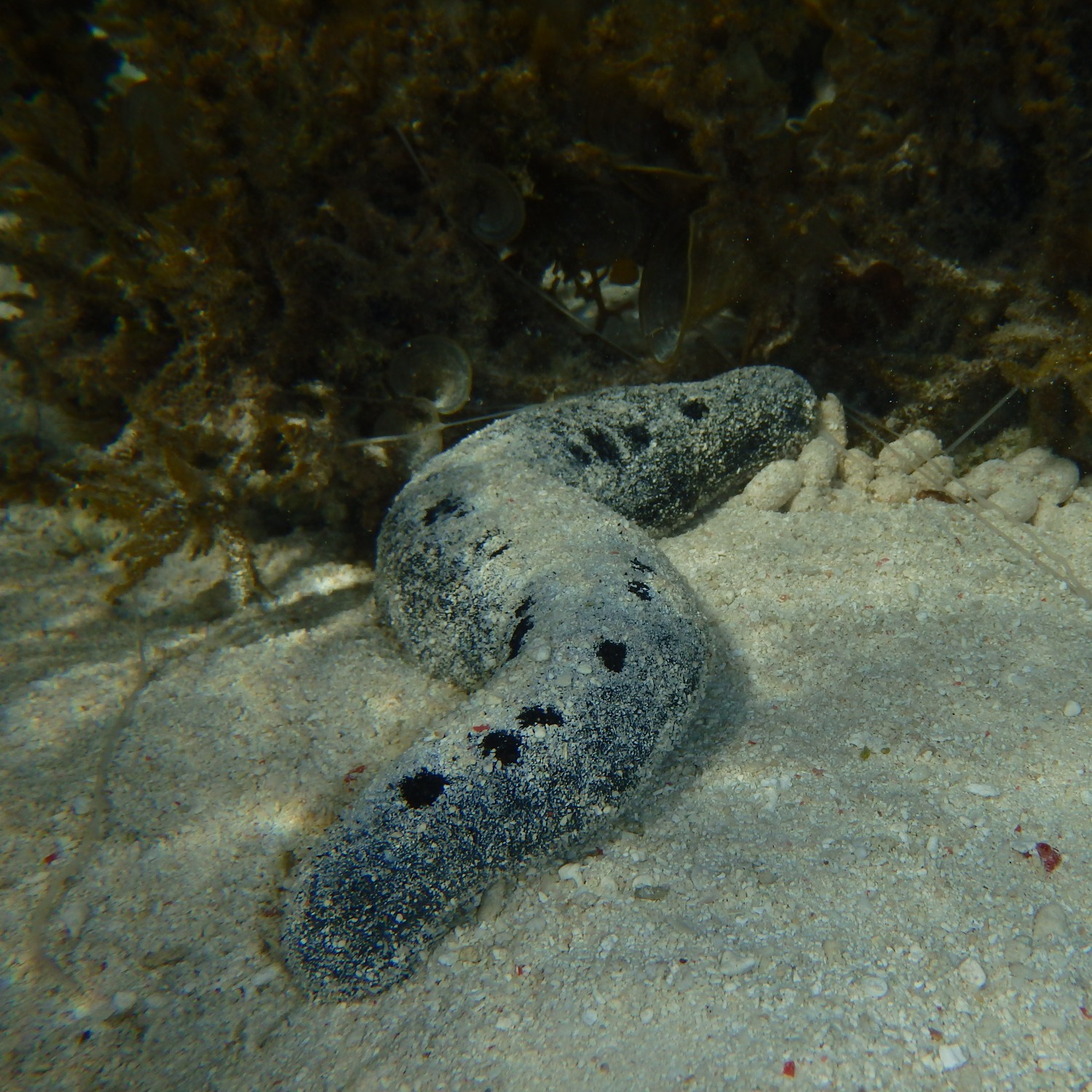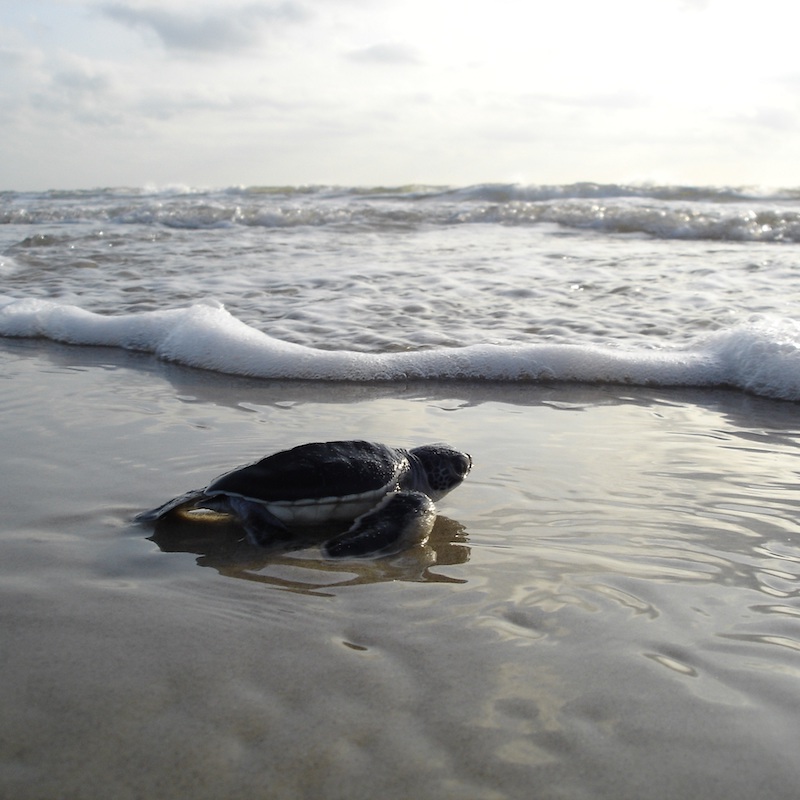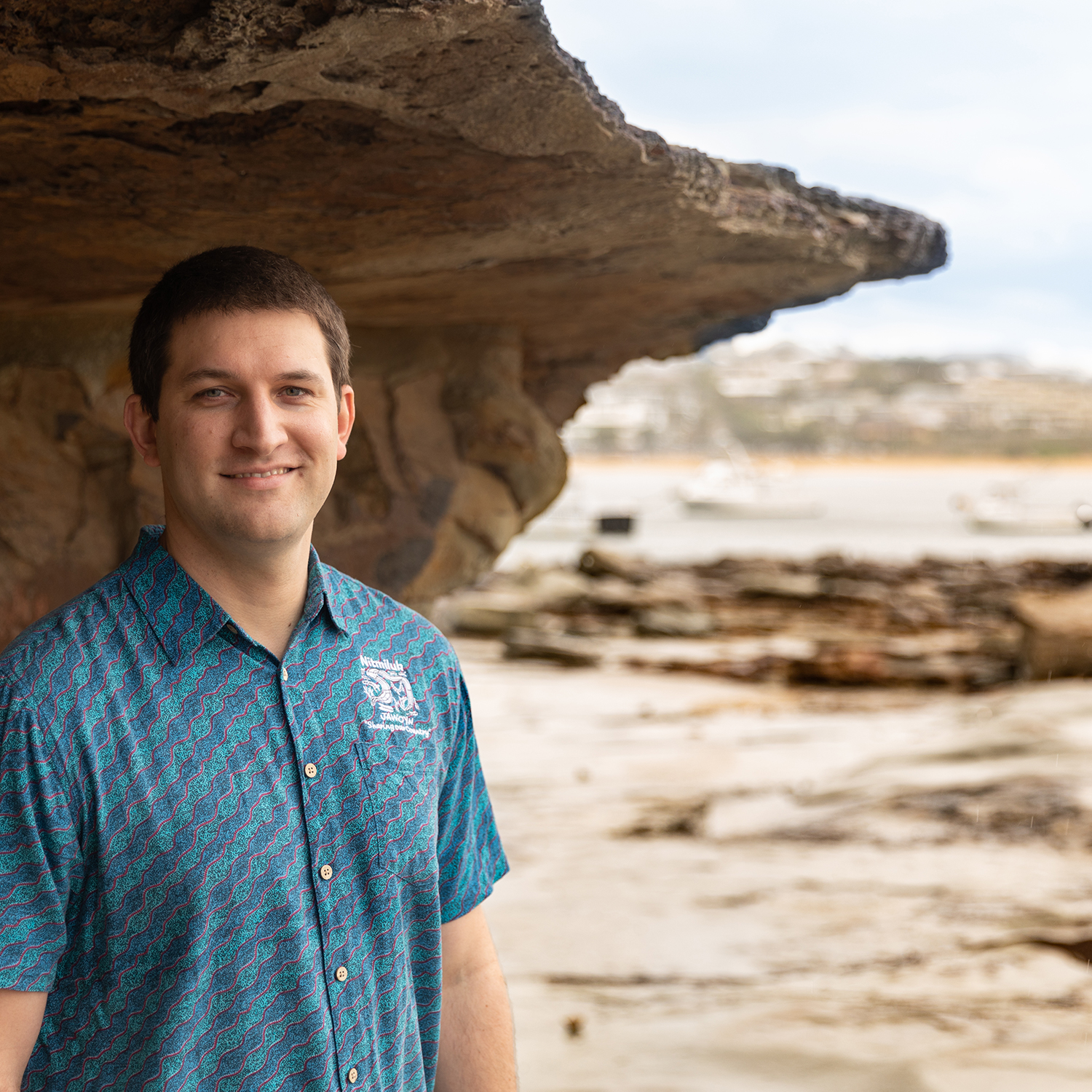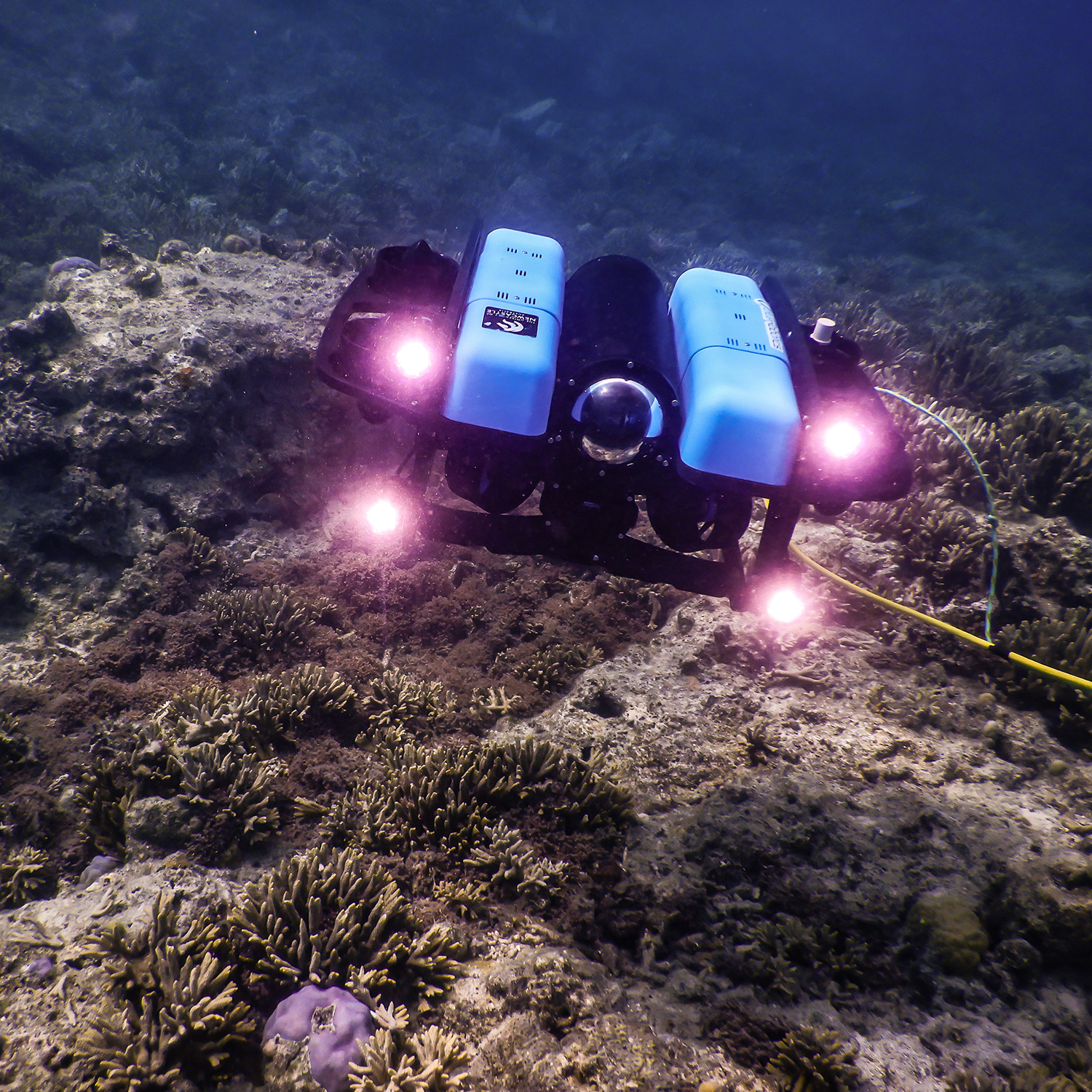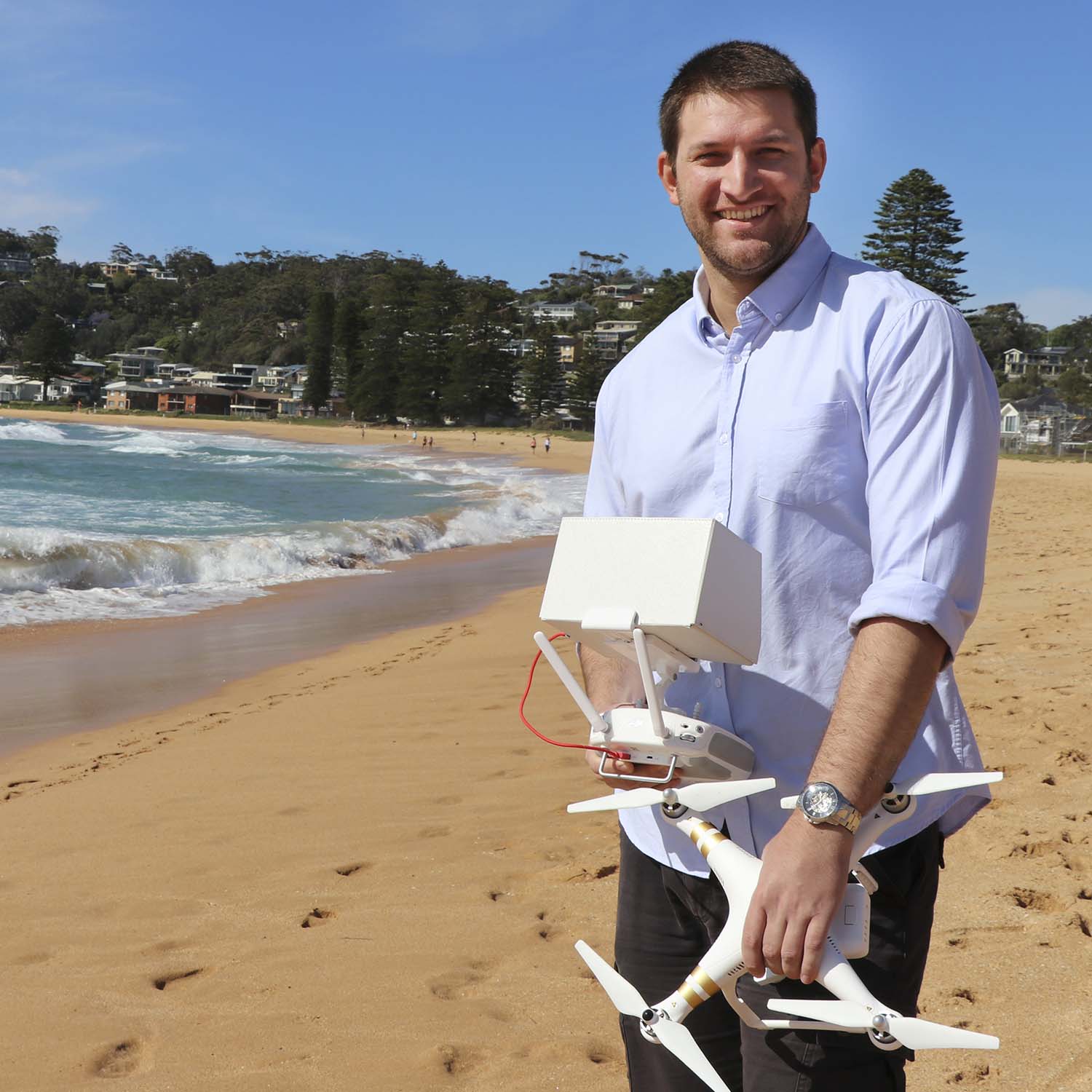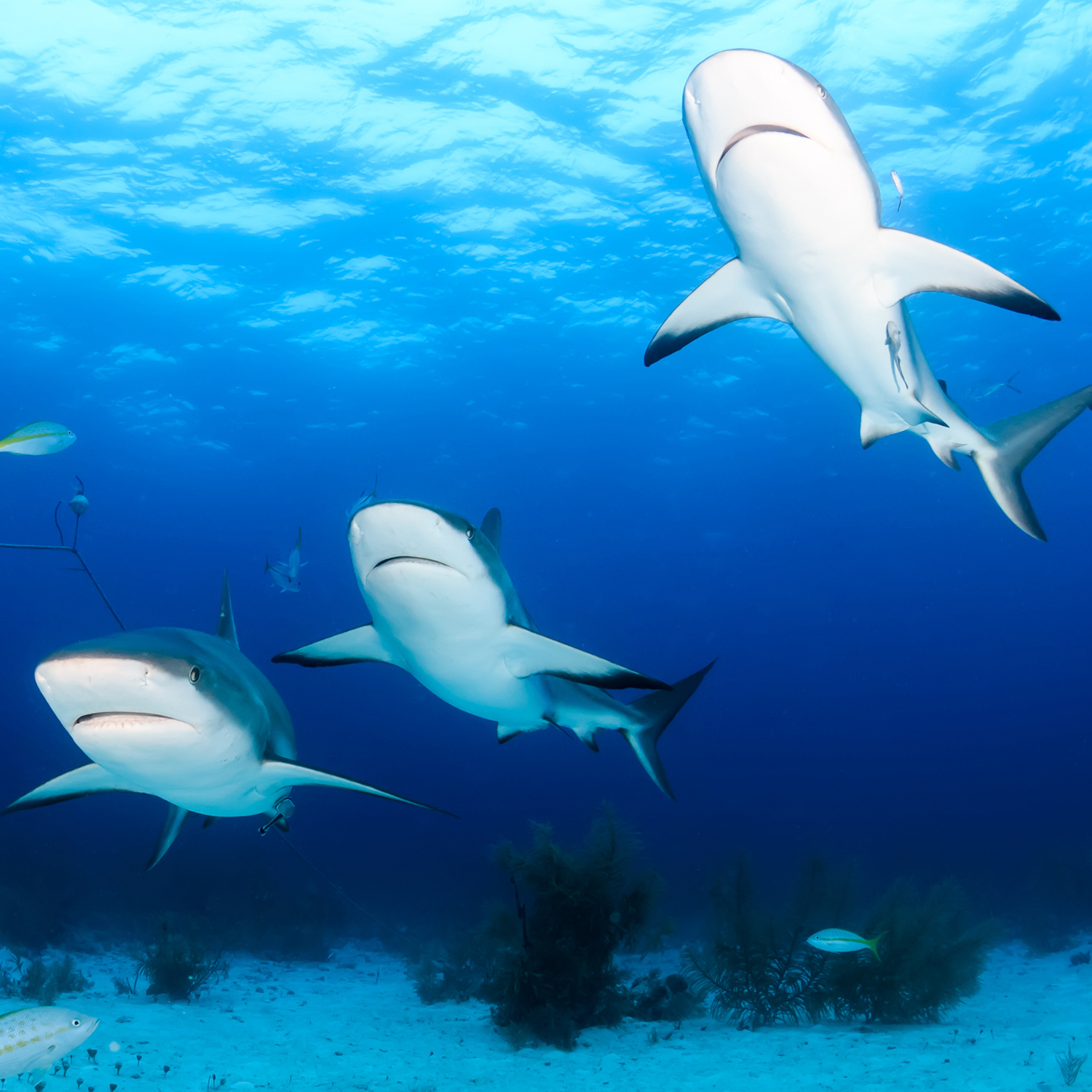| 2024 |
McSpadden KL, Raoult V, Bennett MA, Gaston TF, 'Imaging Sonar Reveals Diel Movement of Fish Throughout a Developed Australian Estuary', Estuaries and Coasts, 47 880-893 (2024) [C1]
Estuaries present a unique interface between ocean and freshwater systems and support key fish habitats. While the role of estuaries for juvenile fish has been studied extensively... [more] Estuaries present a unique interface between ocean and freshwater systems and support key fish habitats. While the role of estuaries for juvenile fish has been studied extensively, the daily movement patterns of large fish and the exchange of fishes between estuary and ocean are less understood, particularly in developed estuaries. This study examines the quantity of fish biomass transiting through an important commercial fishing estuary in New South Wales, Australia, over 4¿months, at four sites, and across diel periods. We used an imaging sonar across diurnal and nocturnal sampling events to reveal the size of fish, their movement patterns, and the biomass flux occurring throughout the estuary. Across ~ 60¿h of footage, > 66,200 fish were counted and measured. Fish activity was the greatest at night, with 77% of fish biomass flux (kg h-1) occurring during nocturnal sampling. The total observed fish biomass over the 60¿h amounted to ~ 15,500¿kg, with the highest activity recorded at the estuary mouth at night (736 ± 463¿kg¿h-1). Overall, mean fish length was the greatest at night (25.2 ± 2.0¿cm); however, fish observed during the day at the estuary mouth had the highest mean length (27.8 ± 6.9¿cm). Extrapolated across the width of the estuary, total fish movement ranged to a maximum of 47 Tons h-1 in the lower estuary (Stockton) and a minimum of 0.4 Tons h-1 in the upper estuary (Throsby Creek Lower). These results demonstrate the importance of estuaries, despite their level of development, in supporting the daily movement patterns of fish biomass between habitats, estuary, and ocean. Graphical Abstract: (Figure presented.).
|
|
|
| 2024 |
Grew M, Raoult V, Gaston TF, 'Behavioural response of benthic elasmobranchs to a neodymium magnet under controlled laboratory conditions', Fisheries Research, 271 (2024) [C1]
Global elasmobranch population decline can be largely attributed to anthropogenic impacts such as commercial fishing. As such, reducing bycatch of these animals is a key managemen... [more] Global elasmobranch population decline can be largely attributed to anthropogenic impacts such as commercial fishing. As such, reducing bycatch of these animals is a key management objective in many fisheries. Magnetic deterrents such as permanent and rare-earth magnets can deter both pelagic and benthic elasmobranch species. However, the literature is inconsistent and shows varied levels of effectiveness depending on the species and the deterrent. To broaden our understanding of species-specific differences in deterrent effectiveness, this study assessed the efficacy of a rare-earth magnet to deter four benthic elasmobranchs under laboratory conditions: Port Jackson shark (Heterodontus portusjacksoni; n = 10), epaulette shark (Hemiscyllium ocellatum; n = 8), eastern fiddler ray (Trygonorrhina fasciata; n = 10), and the blue spotted mask ray (Neotrygon kuhlii; n = 7). After evaluating the behavioural response of the four study species in the presence of a N52 neodymium magnet and a control in 207 trials, the neodymium magnet did not effectively prevent individuals from entering an experimental compartment. The magnet only had a minor deterrent effect, slightly reducing the proportion of successful attempts at entry through the door and over the neodymium magnet (control: 0.94 ± 0.23; neodymium magnet: 0.74 ± 0.3; mean ± standard deviation). We hypothesised this was a result of species-specific biological and behavioural factors that reduce the effectiveness of magnets as deterrents for these species. Our results suggest fisheries management moves away from trialling magnets as elasmobranch deterrents due to their inconsistent effectiveness, and rather investigate other devices such as those using electrical fields that show greater potential.
|
|
Nova |
| 2024 |
Raoult V, Phillips AA, Nelson J, Niella Y, Skinner C, Tilcock MB, et al., 'Why aquatic scientists should use sulfur stable isotope ratios ( 34S) more often', Chemosphere, 355 141816-141816 (2024)
|
|
|
| 2024 |
Macreadie PI, Wartman M, Roe P, Hodge JM, Helber SB, Waryszak P, Raoult V, 'Seagrasses produce most of the soil blue carbon in three Maldivian islands', Frontiers in Marine Science, 11 (2024) [C1]
Blue carbon is fast garnering international interest for its disproportionate contribution to global carbon stocks. However, our understanding of the size of these blue carbon sto... [more] Blue carbon is fast garnering international interest for its disproportionate contribution to global carbon stocks. However, our understanding of the size of these blue carbon stocks, as well as the provenance of carbon that is stored within them, is still poor. This is especially pertinent for many small-island nations that may have substantial blue carbon ecosystems that are poorly studied. Here, we present a preliminary assessment of blue carbon from three islands in the Maldives. The higher purpose of this research was to assess the feasibility of using blue carbon to help offset carbon emissions associated with Maldivian tourism, the largest Maldivian industry with one of the highest destination-based carbon footprints, globally. We used stable isotope mixing models to identify how habitats contributed to carbon found in sediments, and Loss on Ignition (LoI) to determine carbon content. We found that for the three surveyed islands, seagrasses (Thalassia hemprichii, Thalassodendron ciliatum, Halodule pinofilia, Syringodium isoetifolium, and Cymodocea rotundata) were the main contributors to sediment blue carbon (55 ¿ 72%) while mangroves had the lowest contribution (9 ¿ 44%). Surprisingly, screw pine (Pandanus spp.), a relative of palm trees found across many of these islands, contributed over a quarter of the carbon found in sediments. Organic carbon content (¿blue carbon¿) was 6.8 ± 0.3 SE % and 393 ± 29 tonnes ha-1 for mangrove soils, and 2.5 ± 0.2% and 167 ± 20 tonnes ha-1 for seagrasses, which is slightly higher than global averages. While preliminary, our results highlight the importance of seagrasses as carbon sources in Maldivian blue carbon ecosystems, and the possible role that palms such as screw pines may have in supplementing this. Further research on Maldivian blue carbon ecosystems is needed to: 1) map current ecosystem extent and opportunities for additionality through conservation and restoration; 2) determine carbon sequestration rates; and 3) investigate options and feasibility for tourism-related blue carbon crediting. Overall, the opportunity for blue carbon in the Maldives is promising, but the state of knowledge is very limited.
|
|
|
| 2024 |
Appleby M, Raoult V, Broadhurst MK, Gaston T, 'Can denticle morphology help identify southeastern
|
|
|
| 2023 |
Pini-Fitzsimmons J, Raoult V, Gaston T, Knott NA, Brown C, 'Diving into the diet of provisioned smooth stingrays using stable isotope analysis.', J Fish Biol, 102 1206-1218 (2023) [C1]
|
|
Nova |
| 2023 |
Bourke E, Raoult V, Williamson JE, Gaston TF, 'Estuary Stingray (Dasyatis fluviorum) Behaviour Does Not Change in Response to Drone Altitude', DRONES, 7 (2023) [C1]
|
|
Nova |
| 2023 |
Page CE, Ainsworth TD, Leggat W, Egan S, Gupta AS, Raoult V, Gaston TF, 'Localising terrestrially derived pollution inputs to threatened near-shore coral reefs through stable isotope, water quality and oceanographic analysis.', Mar Pollut Bull, 193 115193 (2023) [C1]
|
|
Nova |
| 2023 |
Heimhuber V, Raoult V, Glamore WC, Taylor MD, Gaston TF, 'Restoring blue carbon ecosystems unlocks fisheries' potential', Restoration Ecology, 32 (2023) [C1]
|
|
Nova |
| 2023 |
Godinez-Espinosa S, Raoult V, Smith TM, Gaston TF, Williamson JE, 'Functional roles of coral reef primary producers examined with stable isotopes', Marine and Freshwater Research, 74 601-613 [C1]
|
|
Nova |
| 2023 |
Grainger R, Raoult V, Peddemors VM, Machovsky-Capuska GE, Gaston TF, Raubenheimer D, 'Integrating isotopic and nutritional niches reveals multiple dimensions of individual diet specialisation in a marine apex predator.', J Anim Ecol, 92 514-534 (2023) [C1]
|
|
Nova |
| 2023 |
Raoult V, Pini-Fitzsimmons J, Smith TM, Gaston TF, 'Testing non-lethal magnets and electric deterrents on batoids to lower oyster depredation', Regional Studies in Marine Science, 61 (2023) [C1]
Cultured oysters are one of the most valuable marine industries globally, however, predation of oysters during the grow out phase by rays can lead to large crop losses. Ray predat... [more] Cultured oysters are one of the most valuable marine industries globally, however, predation of oysters during the grow out phase by rays can lead to large crop losses. Ray predation is usually mitigated by building large, netted structures around or over oyster racks, but these can fail, are costly to maintain, and can lead to parasitic flatworms that lower oyster value. Here we examine the potential of using non-lethal deterrents including magnets and electric deterrents to reduce oyster predation from six species of rays. A preliminary field experiment compared the deterrent potential of ferrite, rare earth (neodymium) and an electric deterrent, and found only the electric deterrent reliably prevented rays from feeding on baits (100% of interactions with rays). A larger experiment conducted amongst oyster farms found the electric deterrent was very effective (85.48% across all interactions) at reducing feeding interactions relative to a control. These results highlight that electric deterrents could be developed to reduce oyster predation by rays without the limitations of more traditional measures. Furthermore, permanent magnets were considerably less effective at deterring batoid interactions than electric deterrents, and would not be viable for these applications.
|
|
Nova |
| 2023 |
Martinez-Baena F, Raoult V, Taylor MD, Gaston TF, McLeod I, Bishop MJ, 'Trophic Structure of Temperate Australian Oyster Reefs Within the Estuarine Seascape: a Stable Isotope Analysis', Estuaries and Coasts, 46 844-859 (2023) [C1]
Remnant oyster reefs support diverse communities of invertebrates and fish, and there is growing interest in restoring this important habitat. Whether the construction of new oyst... [more] Remnant oyster reefs support diverse communities of invertebrates and fish, and there is growing interest in restoring this important habitat. Whether the construction of new oyster reefs will enhance or simply redistribute existing fisheries¿ productivity depends on their trophic role¿which, to date, is unknown for Australian estuaries. In this study, conducted in Port Stephens, Australia, stable isotope analysis was used to determine trophic linkages among remnant oyster reefs and their resident and transient species. Specifically, this study elucidated whether the potential trophic linkages could be arising through the direct consumption of reef-forming bivalves or from the uptake of oyster-generated organic matter found in the sediment and consumption of reef-dwelling organisms. A total of six primary producers and 35 consumers of distinct feeding guilds were sampled. Results indicated oyster reefs are contributing to the trophic ecology of both resident and transient species, both through direct predation on the reef bivalves but also indirectly through consumption of the reef benthic organic matter and consumption of other reef-dwelling organisms. Oysters and mussels were an important prey group (> 40% contribution) for three resident and five transient species, including polychaetes, blue swimmer crabs, toadfish, luderick, leatherjackets, oyster gobies, and stingarees. Benthic organic matter from the oyster reef was found to be a primary resource for 12 residents and four transient species, including crabs, shrimps, gastropods, and fish. Oyster reefs are key foraging grounds in the estuarine seascape, and their restoration will enhance fisheries productivity by broadening the trophic resource base and contribute to the estuarine energy transfer to higher trophic levels.
|
|
Nova |
| 2023 |
Raoult V, Pirotta V, Gaston TF, Norman B, Reynolds S, Smith TM, et al., 'Widespread exposure of marine parks, whales, and whale sharks to shipping', MARINE AND FRESHWATER RESEARCH, 74 75-85 (2023) [C1]
|
|
Nova |
| 2022 |
Raoult V, Gaston TF, Smith C, Dolfo V, Park J-M, Williamson JE, 'Patterns of mother-embryo isotope fractionation in batoids vary within and between species.', J Fish Biol, (2022) [C1]
|
|
Nova |
| 2022 |
Chan AJ, Raoult V, Jaine FRA, Peddemors VM, Broadhurst MK, Williamson JE, 'Trophic niche of Australian cownose rays (Rhinoptera neglecta) and whitespotted eagle rays (Aetobatus ocellatus) along the east coast of Australia.', J Fish Biol, 100 970-978 (2022) [C1]
|
|
Nova |
| 2022 |
Williamson JE, Gillings MR, Nevatte RJ, Harasti D, Raoult V, Ghaly TM, et al., 'Genetic differentiation in the threatened soft coral Dendronephthya australis in temperate eastern Australia', Austral Ecology, 47 804-817 (2022) [C1]
The endangered soft coral Dendronephthya australis faces substantial population decreases in central eastern Australian waters. Despite uncertainty about the cause of these declin... [more] The endangered soft coral Dendronephthya australis faces substantial population decreases in central eastern Australian waters. Despite uncertainty about the cause of these declines, the population genetics of the species has not been investigated. Genetic analysis suggests that D.¿australis is a single species within the family Nephtheidae, confirming identifications based on morphological characteristics only. Soft coral colonies were distributed from Seahorse Gardens in Port Stephens to Jervis Bay in temperate Australian waters, a distance of some 400¿km. Genetic differentiation was observed along this distribution using SNP genotyping. Relatively high levels of genetic differentiation were observed between Jervis Bay and the other sites, indicating limited gene flow between this location and others. Moreover, the genetic distinctiveness, low diversity and heterozygote excess at this southern location suggested that it was subjected to a recent population decline and genetic bottleneck. Colonies at Seahorse Gardens and Ettalong, approximately 150¿km south of Seahorse Gardens, displayed greater genetic diversity, making these sites more likely to host ancestral populations and to have acted as refugia. Recent substantial decreases in population sizes at these locations are particularly concerning, and these locations require immediate conservation attention.
|
|
Nova |
| 2022 |
Riveron S, Raoult V, Slip DJ, Harcourt RG, 'Lipid extraction has tissue-dependent effects on isotopic values (delta S-34, delta C-13, and delta N-15) from different marine predators', RAPID COMMUNICATIONS IN MASS SPECTROMETRY, 36 (2022) [C1]
|
|
Nova |
| 2022 |
Finlay-Jones H, Raoult V, Harasti D, Gaston TF, 'What eats a cauliflower coral? An assessment of predation on the endangered temperate soft coral, Dendronepthya australis', Marine and Freshwater Research, 73 307-318 (2022) [C1]
Temperate soft corals are found in many estuaries around the world and often form large habitats in these environments, yet the functional ecology of soft corals is poorly underst... [more] Temperate soft corals are found in many estuaries around the world and often form large habitats in these environments, yet the functional ecology of soft corals is poorly understood. To understand the functional role of a soft coral in temperate ecosystems, we examined the role of the endangered Dendronepthya australis cauliflower coral as habitat for fishes and invertebrates, and whether associated species used the soft coral as a food source. Using Bayesian stable isotope mixing models of d13C and d15N values of soft corals and a suite of potential invertebrate consumers, we found that five of eight soft-coral-Associated invertebrates were all likely to be feeding almost exclusively on the soft corals. In situ feeding experiments conducted using baited remote underwater video systems (BRUVS) with soft coral cuttings as 'bait' did not identify any larger species as consumers. Fish assemblages studied using remote underwater video systems (RUVS) were diverse in the soft coral habitat and overlapped with assemblages of both sediment and seagrass environments. These results highlighted that these soft corals have a valuable trophic role in estuarine food webs through trophic transfer of nutrients via invertebrate consumers, and that soft coral habitats are used by commercially and recreationally important fishes.
|
|
Nova |
| 2022 |
Raoult V, Taylor MD, Schmidt RK, Cresswell ID, Ware C, Gaston TF, 'Valuing the contribution of estuarine habitats to commercial fisheries in a seagrass-dominated estuary', Estuarine, Coastal and Shelf Science, 274 (2022) [C1]
Estimating the economic value of ecosystem services derived from estuarine habitats is important for prioritising management, conservation, and restoration activities, but remains... [more] Estimating the economic value of ecosystem services derived from estuarine habitats is important for prioritising management, conservation, and restoration activities, but remains challenging. Recently, a novel approach to estimate the value of estuarine habitats for species commercially harvested from estuaries was developed, which incorporates Bayesian stable isotope mixing models that identify the underlying primary production responsible for the nutrition of these species and links this to the value of product for fisheries. However, the difficultly of separating common primary nutrient sources in estuaries; saltmarsh grass (Sporobolus virginicus) and seagrasses, means application of this approach has been constrained to estuaries with little or no seagrass. Here, we extend this approach and examine the use of tri-variate (C, N and S) isotopic composition to model the comparative economic value of saltmarsh, seagrass, and other producer groups, for a commercial fishery. Isotope data indicated that grouped estuary producers contributed 44 ± 16% (mangrove and saltmarsh succulents), 22 ± 11% (saltmarsh grass), 11 ± 6% (fine benthic organic matter) and 23 ± 11% (seagrasses) of exploited species diets. Although seagrass and saltmarsh contributions were reasonably similar, the areal coverage of saltmarsh habitats was ~10% that of seagrasses. This affected the area-standardised valuation of these habitats, which suggested that saltmarsh had the highest value (AUD $621 ± 191 ha-1y-1) followed by mangroves (AUD $227 ± 66 ha-1y-1), while seagrasses had the lowest value (AUD $63 ± 29 ha-1y-1). These results highlight the impact of areal coverage on the comparative value of estuarine habitats, but also highlight that habitats with lesser areal extent but higher proportional contribution to diets of exploited species may present a higher priority for conservation or repair.
|
|
Nova |
| 2022 |
Niella Y, Raoult V, Gaston T, Goodman K, Harcourt R, Peddemors V, Smoothey AF, 'Reliance of young sharks on threatened estuarine habitats for nutrition implies susceptibility to climate change', Estuarine, Coastal and Shelf Science, 268 (2022) [C1]
Climate change and urbanization of coastal areas are impacting estuarine habitats globally. While these regions are important for the early-life development of many aquatic specie... [more] Climate change and urbanization of coastal areas are impacting estuarine habitats globally. While these regions are important for the early-life development of many aquatic species, links between habitat use and foraging ecology are not well known. Thus, it is essential to understand the importance of threatened habitats for animals inhabiting estuaries to promote their conservation and improve ecosystem management. This study examined the importance of estuarine habitats as feeding grounds for juvenile bull sharks (Carcharhinus leucas) in the Clarence River, a nursery area where the species is targeted by commercial fisheries in New South Wales, Australia. Juvenile sharks (n = 54) ranging from one to ~6.5 years-old, together with particulate matter and several primary producer species of mangrove and saltmarsh, were sampled for d13C, d15N and d34S stable isotopes. Bayesian mixing models and a Generalized Additive Mixed Model were used to investigate the contribution of estuarine habitats to the diet of bull sharks and changes with growth. The importance of resources consumed from within mangrove habitats for juvenile bull shark resource use was minimal but slightly increased with age, with younger sharks (<2.5 years) relying on prey feeding on sources derived from particulate organic matter, while older juveniles (4¿6.5 years) preyed on species that relied mostly on threatened saltmarsh habitats. Our findings highlight the important linkages between habitats of conservation concern and species redistribution in response to climate change, particularly as the animals could be moving towards new areas lacking suitable estuarine habitats.
|
|
Nova |
| 2021 |
Riverón S, Raoult V, Baylis AMM, Jones KA, Slip DJ, Harcourt RG, 'Pelagic and benthic ecosystems drive differences in population and individual specializations in marine predators', Oecologia, 196 891-904 (2021) [C1]
Individual specialization, which describes whether populations are comprised of dietary generalists or specialists, has profound ecological and evolutionary implications. However,... [more] Individual specialization, which describes whether populations are comprised of dietary generalists or specialists, has profound ecological and evolutionary implications. However, few studies have quantified individual specialization within and between sympatric species that are functionally similar but have different foraging modes. We assessed the relationship between individual specialization, isotopic niche metrics and foraging behaviour of two marine predators with contrasting foraging modes: pelagic foraging female South American fur seals (Arctocephalus australis) and benthic foraging female southern sea lions (Otaria byronia). Stable isotope analysis of carbon and nitrogen was conducted along the length of adult female vibrissae to determine isotopic niche metrics and the degree of individual specialization. Vibrissae integrated time ranged between 1.1 and 5.5¿years, depending on vibrissae length. We found limited overlap in dietary niche-space. Broader population niche sizes were associated with higher degrees of individual specialization, while narrower population niches with lower degrees of individual specialization. The degree of individual specialization was influenced by pelagic and benthic foraging modes. Specifically, South American fur seals, foraging in dynamic pelagic environments with abundant but similar prey, comprised specialist populations composed of generalist individuals. In contrast, benthic southern sea lions foraging in habitats with diverse but less abundant prey had more generalist populations composed of highly specialized individuals. We hypothesize that differences in specialization within and between populations were related to prey availability and habitat differences. Our study supports growing body of literature highlighting that individual specialization is a critical factor in shaping the ecological niche of higher marine predators.
|
|
Nova |
| 2021 |
Oleksyn S, Tosetto L, Raoult V, Joyce KE, Williamson JE, 'Going batty: The challenges and opportunities of using drones to monitor the behaviour and habitat use of rays', Drones, 5 1-15 (2021) [C1]
The way an animal behaves in its habitat provides insight into its ecological role. As such, collecting robust, accurate datasets in a time-efficient manner is an ever-present pre... [more] The way an animal behaves in its habitat provides insight into its ecological role. As such, collecting robust, accurate datasets in a time-efficient manner is an ever-present pressure for the field of behavioural ecology. Faced with the shortcomings and physical limitations of traditional ground-based data collection techniques, particularly in marine studies, drones offer a low-cost and efficient approach for collecting data in a range of coastal environments. Despite drones being widely used to monitor a range of marine animals, they currently remain underutilised in ray research. The innovative application of drones in environmental and ecological studies has presented novel opportunities in animal observation and habitat assessment, although this emerging field faces substantial challenges. As we consider the possibility to monitor rays using drones, we face challenges related to local aviation regulations, the weather and environment, as well as sensor and platform limitations. Promising solutions continue to be developed, however, growing the potential for drone-based monitoring of behaviour and habitat use of rays. While the barriers to enter this field may appear daunting for researchers with little experience with drones, the technology is becoming increasingly accessible, helping ray researchers obtain a wide range of highly useful data.
|
|
Nova |
| 2021 |
Butcher P, Colefax A, Gorkin R, Kajiura S, López N, Mourier J, et al., 'The Drone Revolution of Shark Science: A Review', Drones, 5 8-8 [C1]
|
|
Nova |
| 2021 |
Hewitt DE, Taylor MD, Raoult V, Smith TM, Gaston TF, 'Diet-tissue discrimination and turnover of d
Rationale: Stable isotopes are used to study trophic and movement ecology in aquatic systems, as they provide spatially distinct, time-integrated signatures of diet. Stable isotop... [more] Rationale: Stable isotopes are used to study trophic and movement ecology in aquatic systems, as they provide spatially distinct, time-integrated signatures of diet. Stable isotope ecology has been used to quantify species-habitat relationships in many important fisheries species (e.g., penaeid prawns), with approaches that typically assume constant values for diet-tissue discrimination and diet-tissue steady state, but these can be highly variable. Here we provide the first report of these processes in Metapenaeus macleayi (eastern school prawn). Methods: Here we explicitly measure and model carbon (d13C) and nitrogen (d15N) diet-tissue discrimination and turnover in eastern school prawn muscle tissue as a function of experimental time following a change in diet to an isotopically distinct food source. Results: Diet-tissue discrimination factors were 5 and 0.6¿ for d13C and d15N, respectively. Prawn muscle tissue reached an approximate steady state after approximately 50 and 30 days for d13C and d15N. Half-lives indicated faster turnover of d15N (~8¿days) than d13C (~14 days). Conclusions: Our diet-tissue discrimination factors deviate from ¿typical¿ values with larger values for carbon than nitrogen isotopes, but are generally similar to those measured in other crustaceans. Similarly, our estimates of isotopic turnover align with those in other penaeid species. These findings confirm muscle tissue as a reliable indicator of long-term diet and movement patterns in eastern school prawn.
|
|
Nova |
| 2021 |
Oleksyn S, Tosetto L, Raoult V, Williamson JE, 'Drone-Based Tracking of the Fine-Scale Movement of a Coastal Stingray (Bathytoshia brevicaudata)', REMOTE SENSING, 13 (2021) [C1]
|
|
Nova |
| 2021 |
Tachas JN, Raoult V, Morris RL, Swearer SE, Gaston TF, Strain EMA, 'Eco-engineered mangroves provide complex but functionally divergent niches for estuarine species compared to natural mangroves', Ecological Engineering, 170 (2021) [C1]
There is growing demand for novel coastal protection approaches that also provide co-benefits such as enhanced biodiversity. Rock-fillets, which are used to stabilise eroding bank... [more] There is growing demand for novel coastal protection approaches that also provide co-benefits such as enhanced biodiversity. Rock-fillets, which are used to stabilise eroding banks in estuaries, can be colonised by mangroves, and may provide habitat for estuarine fauna. However, it is unknown whether hybrid mangrove/rock-fillet habitats are functionally equivalent to natural mangroves, for estuarine fauna. To determine whether hybrid mangrove habitats are functionally equivalent to natural mangroves, we used d13C and d15N stable isotope analyses to describe the isotopic niche space and overlap of estuarine species in these two habitats across three estuaries in NSW, Australia. Using a Bayesian standard ellipse analysis of isotopic niche area, over half the 12 species observed had larger isotopic niche areas in natural mangroves compared to hybrid habitats, however there were no clear patterns for species between habitats. Natural mangroves and hybrid rock-fillet habitats were isotopically distinct for all species sampled (low proportional overlap, 0¿19%) suggesting they are not, at present, wholistically functionally equivalent. Estuarine communities from the two habitat types, however, had similar isotopic niches. Hybrid communities displayed a broader range of d13C values compared to natural mangroves, suggesting mangrove/rock-fillet habitats have a more diverse range of basal food sources. These findings demonstrate the potential for defence solutions to provide unique co-benefits by supporting food webs, but also that natural habitats provide unique ecosystem services that should be protected and rehabilitated where possible. Future modelling and monitoring of habitat utilisation and species performance could provide further insight into the co-benefits and trade-offs of hybrid habitats.
|
|
Nova |
| 2021 |
Niella Y, Raoult V, Gaston T, Peddemors VM, Harcourt R, Smoothey AF, 'Overcoming multi-year impacts of maternal isotope signatures using multi-tracers and fast turnover tissues in juvenile sharks', Chemosphere, 269 (2021) [C1]
Stable isotopes are often used to determine the ecological role of different age classes of animals, but particularly for young animals this approach may be compromised. During ge... [more] Stable isotopes are often used to determine the ecological role of different age classes of animals, but particularly for young animals this approach may be compromised. During gestation and or incubation body tissues of the young are derived directly from the mother. In neonates or post hatching, there is a period of transformation as the young grow and forage independently, but during this period different organs will continue to reflect the maternal isotopic signature as a function of their turnover rate. How long this maternal hangover persists remains poorly understood. We applied a multi-tracer approach (d15N, d13C and d34S) to stable isotope signatures in juvenile bull sharks (Carcharhinus leucas) up to 6.5 years post parturition. We found that maternal provisioning was detectable for up to 3.5 years after birth in muscle but only detectable in young-of-the-year for liver. Inclusion of sulphur revealed when maternal signatures disappeared from low-turnover tissue, while also identifying the spatial and trophic ecology patterns from fast-turnover tissue. These results reveal the importance of sampling fast turnover tissues to study the trophic ecology of juvenile elasmobranchs, and how the use of only d15N and d13C isotopes is likely to make maternal patterns more difficult to detect.
|
|
Nova |
| 2021 |
Wueringer BE, Winther-Janson M, Raoult V, Guttridge TL, 'Anatomy of the mechanosensory lateral line canal system and electrosensory ampullae of Lorenzini in two species of sawshark (fam. Pristiophoridae)', JOURNAL OF FISH BIOLOGY, 98 168-177 (2021) [C1]
|
|
Nova |
| 2021 |
Williamson JE, Duce S, Joyce KE, Raoult V, 'Putting sea cucumbers on the map: projected holothurian bioturbation rates on a coral reef scale', CORAL REEFS, 40 559-569 (2021) [C1]
|
|
Nova |
| 2021 |
van Putten EI, Pinkard E, O Grady A, Schmidt RK, Cresswell I, Raoult V, Taylor MD, 'Stakeholder perspectives on the value proposition of enterprise-level natural capital accounting for three primary industries', Environment Systems and Decisions, 41 541-555 (2021) [C1]
Globally we are experiencing a decline in aggregate natural capital. Many primary industries and enterprises are highly dependent on renewable and non-renewable natural capital, b... [more] Globally we are experiencing a decline in aggregate natural capital. Many primary industries and enterprises are highly dependent on renewable and non-renewable natural capital, but there has been little focus on measuring and monitoring the flows benefits from natural capital. Natural capital accounting can help by potentially enabling the enterprise to better adapt and respond to risks in the future. To assist future implementation of natural capital accounting we assess the value proposition perceived by primary industry stakeholders. We use three primary industries in Australia as case studies (cotton, forestry and fisheries), and surveyed 140 stakeholders across the three industries. Interviewees generally suggested natural capital accounting is of public benefit by improving environmental outcomes. Private benefits are obtained through industry gaining social licence, greater market access and better business models. Although there was general agreement over improved environmental outcomes and access to premium markets, there were differences between industries and stakeholders. There were some concerns across the industries about the potential costs natural capital accounting may add to normal business operations and the lack of consistency in practices. Mainstreaming natural capital accounting across primary industries will mean that the value propositions and the implementation barriers need to be addressed. Overall the value proposition of implementing natural capital accounts at the enterprise level must stack up favourably against its costs.
|
|
Nova |
| 2021 |
Raoult V, Grant MI, Martins APB, Feitosa LM, Braccini M, Cardenosa D, et al., 'Assigning shark fin origin using species distribution models needs a reality check Comment', BIOLOGY LETTERS, 17 (2021)
|
|
|
| 2020 |
Carbia PS, Brown C, Park JM, Gaston TF, Raoult V, Williamson JE, 'Seasonal and developmental diet shifts in sympatric and allopatric intertidal gobies determined by stomach content and stable isotope analysis', Journal of Fish Biology, 26 5613-5629 (2020) [C1]
|
|
Nova |
| 2020 |
Raoult V, Peddemors V, Rowling K, Williamson JE, 'Spatiotemporal distributions of two sympatric sawsharks (Pristiophorus cirratus and P. nudipinnis) in south-eastern Australian waters', Marine and Freshwater Research, 71 1342-1354 (2020) [C1]
|
|
Nova |
| 2020 |
Burke PJ, Raoult V, Natanson LJ, Murphy TD, Peddemors V, Williamson JE, 'Struggling with age: Common sawsharks (Pristiophorus cirratus) defy age determination using a range of traditional methods', Fisheries Research, 231 (2020) [C1]
|
|
Nova |
| 2020 |
Raoult V, Trueman CN, Kingsbury KM, Gillanders BM, Broadhurst MK, Williamson JE, et al., 'Predicting Geographic Ranges of Marine Animal Populations Using Stable Isotopes: A Case Study of Great Hammerhead Sharks in Eastern Australia', FRONTIERS IN MARINE SCIENCE, 7 (2020) [C1]
|
|
Nova |
| 2020 |
Broadhurst MK, Tolhurst DJ, Hughes B, Raoult V, Smith TM, Gaston TF, 'Optimising mesh size with escape gaps in a dual-species portunid-trap fishery', Aquaculture and Fisheries, 5 308-316 (2020) [C1]
In south-eastern Australia, the same baited, round traps (comprising 50¿57-mm mesh netting) are used to target giant mud, Scylla serrata and blue swimmer crabs, Portunus armatus i... [more] In south-eastern Australia, the same baited, round traps (comprising 50¿57-mm mesh netting) are used to target giant mud, Scylla serrata and blue swimmer crabs, Portunus armatus in spatially separated fisheries. Both fisheries are characterised by the common, problematic discarding of undersized portunids (<85 and 65 mm carapace length; CL for S. serrata and P. armatus) and fish (yellowfin bream, Acanthopagrus australis). This poor selectivity was addressed here in two experiments assessing the utility of (1) traps partially or completely covered in larger mesh (91 mm to match the minimum legal size of the smaller P. armatus), and then (2) any cumulative benefits of fitting species-specific escape gaps. In experiment 1, there were no differences among catches of legal-sized portunids associated with either partial, or complete trap coverage with larger mesh. Irrespective of mesh coverage, both designs of 91-mm traps also retained significantly fewer (by up to 42%) undersized P. armatus and A. australis. In experiment 2, replicate traps completely covered in 91-mm mesh were tested against conventional traps comprising 56-mm mesh, and traps with the same mesh sizes, but also three escape gaps configured for either S. serrata (46 × 120 mm) or P. armatus (36 × 120 mm) (i.e. four treatments in total). All modified traps maintained catches of legal-sized S. serrata, and only the 91-mm traps with escape gaps caught fewer legal-sized P. armatus. Fewer undersized S. serrata, P. armatus and A. australis (mean catches reduced by up to 49%) were retained in all larger-meshed than small-meshed traps, and in all of those traps with escape gaps (by up to 95%) than without. While there were no significant cumulative benefits of escape gaps in larger-meshed traps (measured by a statistical interaction), there was a trend of fewer unwanted catches overall. These data support configuring portunid traps with mesh sizes matching the morphology of the smallest legal-sized target species. But, simply retroactively fitting escape gaps in existing, smaller-meshed traps will also realize positive selectivity benefits.
|
|
Nova |
| 2020 |
Hewitt DE, Smith TM, Raoult V, Taylor MD, Gaston TF, 'Stable isotopes reveal the importance of saltmarsh-derived nutrition for two exploited penaeid prawn species in a seagrass dominated system', Estuarine, Coastal and Shelf Science, 236 (2020) [C1]
|
|
Nova |
| 2020 |
Raoult V, 'How many papers should scientists be reviewing? An analysis using verified peer review reports', Publications, 8 (2020) [C1]
|
|
Nova |
| 2020 |
Raoult V, Colefax AP, Allan BM, Cagnazzi D, Castelblanco-Martínez N, Ierodiaconou D, et al., 'Operational protocols for the use of drones in marine animal research', Drones, 4 1-35 (2020) [C1]
|
|
Nova |
| 2020 |
Raoult V, Tosetto L, Harvey C, Nelson TM, Reed J, Parikh A, et al., 'Remotely operated vehicles as alternatives to snorkellers for video-based marine research', Journal of Experimental Marine Biology and Ecology, 522 (2020) [C1]
|
|
Nova |
| 2020 |
Burgess KB, Broadhurst MK, Raoult V, Laglbauer BJL, Coleman MA, Bennett MB, 'Short- and long-term diets of the threatened longhorned pygmy devil ray,Mobula eregoodoodetermined using stable isotopes', Journal of Fish Biology, 97 424-434 (2020) [C1]
|
|
Nova |
| 2019 |
Broadhurst MK, Domit C, Trevizani TH, Raoult V, Millar RB, 'Mother-embryo isotope fractionation in the pygmy devilray Mobula kuhlii cf. eregoodootenkee', JOURNAL OF FISH BIOLOGY, 95 589-593 (2019) [C1]
|
|
Nova |
| 2019 |
Raoult V, Broadhurst MK, Peddemors VM, Williamson JE, Gaston TF, 'Resource use of great hammerhead sharks (Sphyrna mokarran) off eastern Australia', JOURNAL OF FISH BIOLOGY, 95 1430-1440 (2019) [C1]
|
|
Nova |
| 2019 |
Park JM, Baeck GW, Raoult V, 'First observation on the diet and feeding strategy of cloudy catshark Scyliorhinus torazame (Tanaka, 1908)', Regional Studies in Marine Science, 28 (2019) [C1]
|
|
Nova |
| 2019 |
Young HJ, Raoult V, Platell ME, Williamson JE, Gaston TF, 'Within-genus differences in catchability of elasmobranchs during trawling', Fisheries Research, 211 141-147 (2019) [C1]
|
|
Nova |
| 2019 |
Raoult V, Williamson JE, Smith TM, Gaston TF, 'Effects of on-deck holding conditions and air exposure on post-release behaviours of sharks revealed by a remote operated vehicle', Journal of Experimental Marine Biology and Ecology, 511 10-18 (2019) [C1]
|
|
Nova |
| 2019 |
Broadhurst MK, Smith TM, Millar RB, Hughes B, Raoult V, Gaston TF, 'Cumulative selectivity benefits of increasing mesh size and using escape gaps in Australian Portunus armatus traps', Fisheries Management and Ecology, 26 319-326 (2019) [C1]
|
|
Nova |
| 2018 |
Bird CS, Veríssimo A, Magozzi S, Abrantes KG, Aguilar A, Al-Reasi H, et al., 'A global perspective on the trophic geography of sharks', Nature Ecology and Evolution, 2 299-305 (2018) [C1]
|
|
Nova |
| 2018 |
Raoult V, Gaston TF, 'Rapid biomass and size-frequency estimates of edible jellyfish populations using drones', Fisheries Research, 207 160-164 (2018) [C1]
|
|
Nova |
| 2018 |
Raoult V, Tosetto L, Williamson JE, 'Drone-Based High-Resolution Tracking of Aquatic Vertebrates', Drones, 2 (2018) [C1]
|
|
Nova |
| 2018 |
Richards RJ, Raoult V, Powter DM, Gaston TF, 'Permanent magnets reduce bycatch of benthic sharks in an ocean trap fishery', Fisheries Research, 208 16-21 (2018) [C1]
|
|
Nova |
| 2018 |
Raoult V, Gaston TF, Taylor MD, 'Habitat fishery linkages in two major south-eastern Australian estuaries show that the C4 saltmarsh plant Sporobolus virginicus is a significant contributor to fisheries productivity', Hydrobiologia, 811 221-238 (2018) [C1]
|
|
Nova |
| 2018 |
Taylor MD, Gaston TF, Raoult V, 'The economic value of fisheries harvest supported by saltmarsh and mangrove productivity in two Australian estuaries', ECOLOGICAL INDICATORS, 84 701-709 (2018) [C1]
|
|
Nova |
| 2018 |
Raoult V, Howell N, Zahra D, Peddemors VM, Howard DL, de Jonge MD, et al., 'Localized zinc distribution in shark vertebrae suggests differential deposition during ontogeny and across vertebral structures'', PLOS ONE, 13 (2018) [C1]
|
|
Nova |
| 2017 |
Nevatte RJ, Williamson JE, Vella NGF, Raoult V, Wueringer BE, 'Morphometry and microanatomy of the barbels of the common sawshark Pristiophorus cirratus (Pristiophoridae): implications for pristiophorid behaviour', JOURNAL OF FISH BIOLOGY, 90 1906-1925 (2017)
|
|
|
| 2017 |
Raoult V, Trompf L, Williamson JE, Brown C, 'Stress profile influences learning approach in a marine fish', PEERJ, 5 (2017)
|
|
|
| 2017 |
Raoult V, Peddemors V, Williamson JE, 'Biology of angel sharks (Squatina sp.) and sawsharks (Pristiophorus sp.) caught in south-eastern Australian trawl fisheries and the New South Wales shark-meshing (bather-protection) program', Marine and Freshwater Research, 68 207-212 (2017)
Two species of angel shark (Squatina australis, S. albipunctata) and two species of sawshark (Pristiophorus nudipinnis, P. cirratus) are frequently caught in south-eastern Austral... [more] Two species of angel shark (Squatina australis, S. albipunctata) and two species of sawshark (Pristiophorus nudipinnis, P. cirratus) are frequently caught in south-eastern Australia. Little is known of the biology of these elasmobranchs, despite being caught as secondary target species in large numbers. The present study collected morphometric and reproductive data from sharks caught in shark-control nets, commercial fishing trawlers and research trawlers in south-eastern Australia. All four species had female-biased sexual size dimorphism, but growth curves between sexes did not differ. Male S. australis individuals were fully mature at ,800-mm total length, male P. nudipinnis at ,900 mm, and male P. cirratus at ,800 mm. Anterior pectoral margins could be used to determine total length in all species. No morphometric measurement could reliably separate Squatina spp. or Pristiophorus spp., although S. albipunctata over 1000-mm total length had larger eyes than did S. australis. Journal compilation.
|
|
|
| 2017 |
Williamson JE, Byrnes EE, Clark JA, Connolly DM, Schiller SE, Thompson JA, et al., 'Ecological impacts and management implications of reef walking on a tropical reef flat community', MARINE POLLUTION BULLETIN, 114 742-750 (2017)
|
|
|
| 2017 |
Raoult V, Reid-Anderson S, Ferri A, Williamson JE, 'How Reliable Is Structure from Motion (SfM) over Time and between Observers? A Case Study Using Coral Reef Bommies', Remote Sensing, 9 (2017) [C1]
|
|
Nova |
| 2016 |
Raoult V, David PA, Dupont SF, Mathewson CP, O'Neill SJ, Powell NN, Williamson JE, 'GoPros TM as an underwater photogrammetry tool for citizen science', PeerJ, 2016 (2016)
|
|
|
| 2016 |
Raoult V, Peddemors VM, Zahra D, Howell N, Howard DL, De Jonge MD, Williamson JE, 'Strontium mineralization of shark vertebrae', Scientific Reports, 6 (2016) [C1]
|
|
|
| 2015 |
Raoult V, Gaston TF, Williamson JE, 'Not all sawsharks are equal: Species of co-existing sawsharks show plasticity in trophic consumption both within and between species', Canadian Journal of Fisheries and Aquatic Sciences, 72 1769-1775 (2015) [C1]
Despite the global distribution of sawsharks, little is known about their diets or their role in the marine biosphere. As species in higher trophic positions are generally conside... [more] Despite the global distribution of sawsharks, little is known about their diets or their role in the marine biosphere. As species in higher trophic positions are generally considered to be more at risk to perturbations such as fishing, understanding their role in the food chain will enable better conservation and management strategies for these species. Two sawshark species (Pristiophorus cirratus, Pristiophorus nudipinnis) co-occur in waters off east Tasmania, Australia. This study determined the trophic positions of these sawsharks and whether they avoided competing with each other through resource partitioning. Isotopic analysis of muscle tissue revealed that P. cirratus and P. nudipinnis had significantly different trophic levels, with P. cirratus likely to have a diet of primary consumers and P. nudipinnis likely to have a piscivorous diet. Owing to their different isotopic signatures, it is also likely that the sawshark rostrum has multiple functions. Both species shifted to higher trophic levels during ontogeny. Maternal isotopic signatures were detectable in P. cirratus juveniles.
|
|
Nova |
| 2012 |
Raoult V, Brown C, Zuberi A, Williamson JE, 'Blood cortisol concentrations predict boldness in juvenile mulloway (Argyosomus japonicus)', Journal of Ethology, 30 225-232 (2012)
There is a growing interest in animal personality because individual variation is the substrate of the evolutionary process. Despite revelations that personality traits affect key... [more] There is a growing interest in animal personality because individual variation is the substrate of the evolutionary process. Despite revelations that personality traits affect key fitness variables, little is known about the proximate mechanisms generating consistent behavioural differences between individuals. Boldness, the propensity to take risks, is one of the most widely studied aspects of personality in fishes. We assessed the position of juvenile Argyosomus japonicus on the "boldness-shyness" continuum by repeatedly recording the time taken to exit a refuge and explore a novel environment. Stress-related hormone concentrations after exposure to a mild stressor were analysed 1 month before behavioural assays and found to be significantly linked to boldness scores. Shy fish had significantly higher plasma cortisol concentrations in response to handling stress than bold fish. Spontaneous switching between personality categories occurred between trials, highlighting the importance of repeated testing of personality traits over time to correctly attribute personality. © 2011 Japan Ethological Society and Springer.
|
|
|
| 2012 |
Raoult V, Brown C, Williamson JE, 'Superglue is Not Super: An Assessment of Superglue for Suturing Tag Incisions in a Cultured Marine Fish', Journal of the World Aquaculture Society, 43 140-143 (2012)
|
|
|





